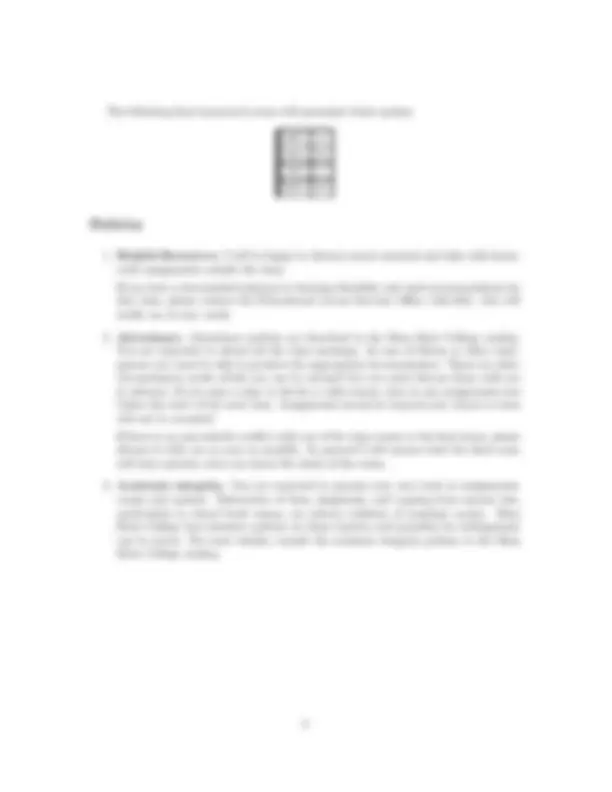



Study with the several resources on Docsity

Earn points by helping other students or get them with a premium plan


Prepare for your exams
Study with the several resources on Docsity

Earn points to download
Earn points by helping other students or get them with a premium plan
Community
Ask the community for help and clear up your study doubts
Discover the best universities in your country according to Docsity users
Free resources
Download our free guides on studying techniques, anxiety management strategies, and thesis advice from Docsity tutors
Information about a university course named 'phys 321: quantum theory i' offered in the fall 2007 semester at mesa state college. The course is taught by professor david collins and covers the fundamental principles of quantum mechanics. The course syllabus, required text, office hours, and contact information. Students are expected to have completed phys 232 as a prerequisite.
Typology: Assignments
1 / 3

This page cannot be seen from the preview
Don't miss anything!


Phys 321 Fall 2007
Instructor: Professor David Collins
Office: Wubben 184
Phone: 248-
email: dacollin@mesastate.edu
Office Hours: TBA
Class Meetings: MWF 9:00-9:50am, Wubben 276
Course Website: http://www.mesastate.edu/∼dacollin/teaching/2007Fall/Phys
/index.html
Required Text: J. S. Townsend, A Modern Approach to Quantum Mechanics, Uni- versity Science Books (2000).
Prerequisites: PHYS 232
Quantum mechanics is a foundation of modern physics, providing a general scheme for understanding a vast range of physical phenomena. Every physicist needs to be familiar with the main ideas and results of quantum mechanics and many use it routinely. This course aims to give you a solid understanding of the framework and applications of quantum mechanics. Quantum mechanics is tremendously important in our modern lifestyle; it explains the operations of semiconductors, lasers, magnetic resonance and other technologies that were inconceivable before the development of the subject. It has also profoundly changed our view of the physical world. Nearly 80 years after quantum mechanics was formalized, ex- perts are still discover apparent paradoxes within the theory and dispute their implications. In Phys 321, the general rules of quantum mechanics will be described using the state representation framework rather than the more limited wavefunction approach. This will be illustrated with two-state quantum systems, which have no classical counterparts but capture the essential ideas of the subject without the distracting mathematical complica- tions associated with single particles with a position degree of freedom. The general rules will then be applied to systems with a position degree of freedom. The course syllabus, subject to modification, is:
Exam 1 Monday 1 October Exam 2 Monday 12 November
Exams will be closed book and closed notes although a formula sheet will be provided and calculators will be allowed.
Individual assignments and exams will be graded using suitable scales. In general, to get full credit (100%) for a problem your solution must be correct and well justified. Partial credit will be given for incomplete or partly correct solutions. No credit (0%) will be given for problems not attempted, assignments not turned in or quizzes and exams missed without good reason. The numerical grades for each component will be totaled and a final numerical grade will be computed according to the following distribution.
Homework 40% Midterm Exams 30% Final Exam 30%